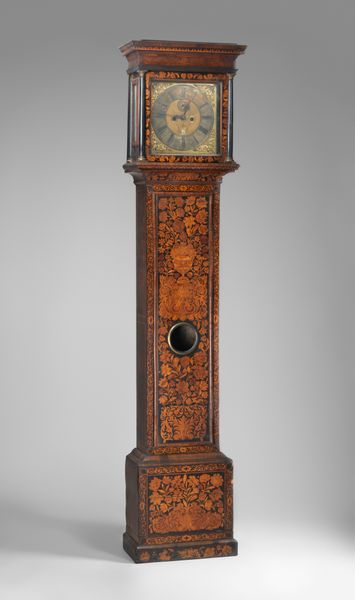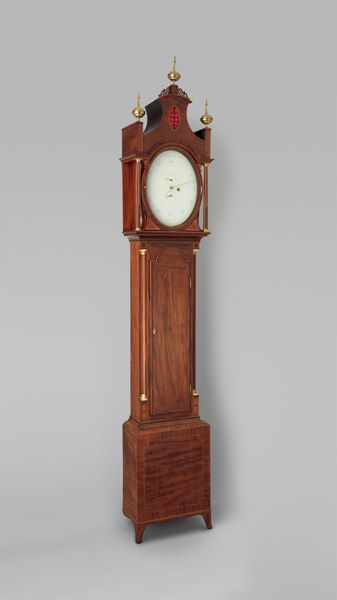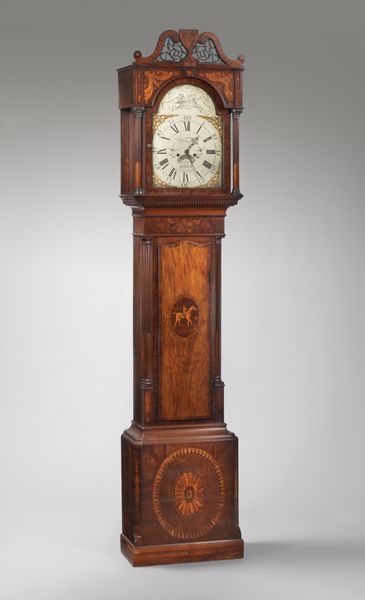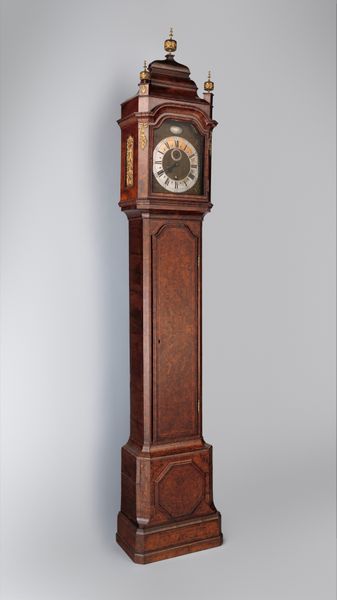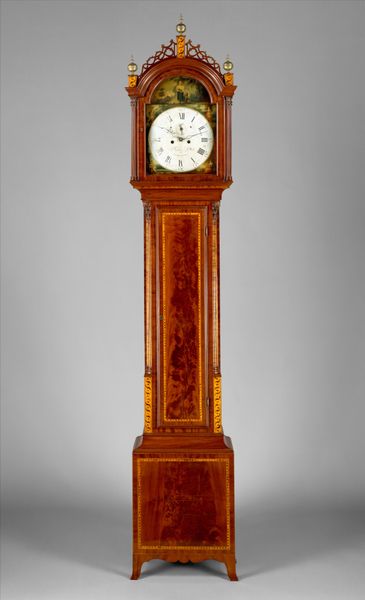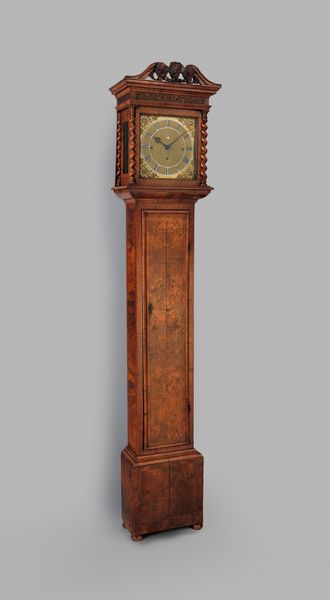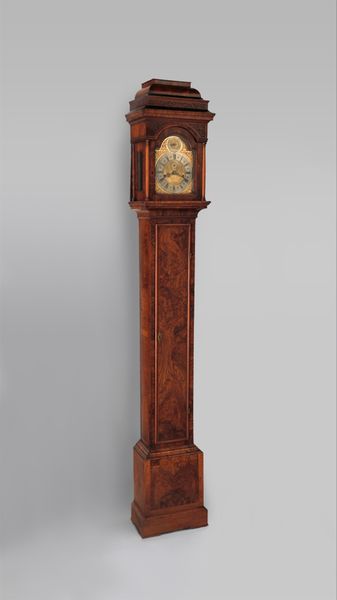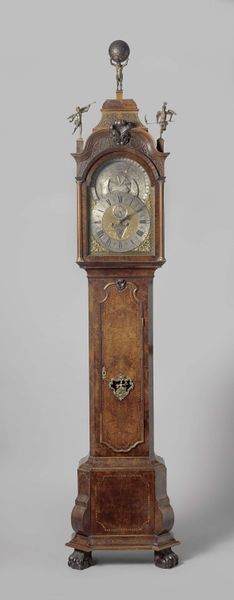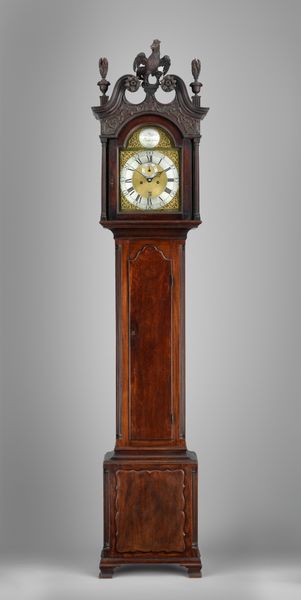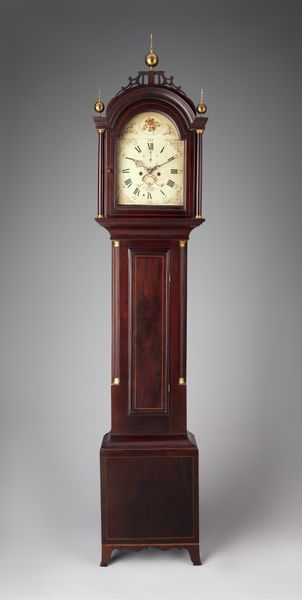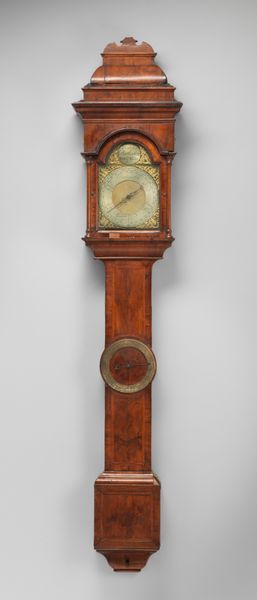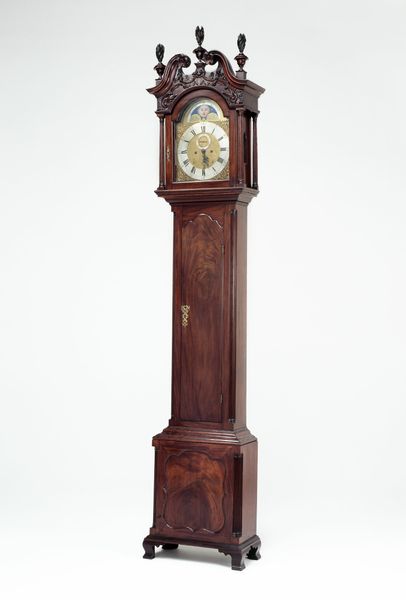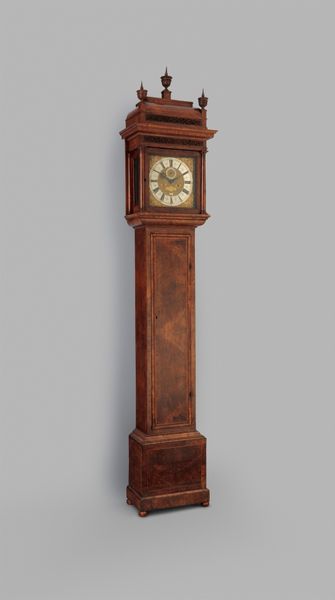
sculpture, wood
#
baroque
#
sculpture
#
furniture
#
form
#
geometric
#
sculpture
#
wood
#
decorative-art
Dimensions: Overall: 83 1/2 × 18 × 9 15/16 in. (212.1 × 45.7 × 25.2 cm)
Copyright: Public Domain
Editor: This extraordinary object is a Longcase clock, crafted between 1680 and 1690. I am struck by how the craftsman managed to turn wood, a relatively simple material, into a sculpture, really. What is your interpretation? Curator: For me, this isn't just decorative art; it's a powerful representation of the social structures and labor practices of the late 17th century. Think about the materials - the specific type of wood used, where it was sourced. It probably involved extensive trade networks, potentially exploitative labor in resource extraction. Editor: So, you're saying the clock tells a story beyond just time? Curator: Precisely. Who had access to the resources to commission such a piece? It’s about understanding access to commodity chains that would supply not only raw materials but skilled craftsmanship, right? What kind of specialized tools would the maker have used? The skills and materials reflect privilege and power of that era. How would the value of this piece be measured through hours of labor it embodies versus materials? Editor: That's fascinating. I hadn't considered the implications of the wood itself. The decorative inlays... does that tie into your interpretation too? Curator: Absolutely. Inlays show an extraordinary display of technical mastery. We need to think critically about labor: apprenticeships, the guilds, divisions of labor. Every decorative flourish shows the system that sustains art, it can serve almost as an index. Editor: So much skill and so many different pairs of hands probably. Thinking about who had access to time as a luxury back then also is very relevant, it completely reframes this for me. Curator: Indeed, analyzing its materials and how it was made allows us to interrogate a moment in history with an appreciation of the labor and resources required for its creation.
Comments
rijksmuseum about 2 years ago
⋮
This is an early Amsterdam longcase clock. This new type of clock was introduced to the Netherlands from England around 1680. With its long pendulum, its timekeeing is more accurate than other types of clocks.The shape and decoration of the case are based on English clocks. Only the carving displays a recognizable Amsterdam style.
Join the conversation
Join millions of artists and users on Artera today and experience the ultimate creative platform.
